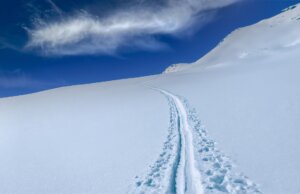Switzerland, a haven for ski-touring aficionados, offers an unparalleled winter adventure beyond the traditional resorts. With its vast, open landscapes and towering peaks, this nation invites explorers to trace their paths through the snow. The allure of ski touring in Switzerland lies in its well-known destinations like Lenzerheide, Adelboden, and Sankt Moritz and the hidden gems within its mountains.
From the untouched trails in the Bernese Oberland to the captivating routes of Appenzellerland, adventurers can immerse themselves in the serene beauty and tranquillity of the Swiss backcountry. These tours are not just about skiing; they are a journey through enchanting landscapes, offering a blend of challenge and discovery. With various terrains catering to different skill levels, from intermediate routes like the Silvretta Traverse to the demanding ascents of the Bernina range, Switzerland serves as the ultimate playground for those seeking the thrill of ski touring amidst nature’s grandeur.
The Silvretta Traverse: An Intermediate Ski Tour
Are you an intermediate-level skier looking for an adventure in Switzerland that packs top-notch skiing and entertaining huts on your journey? The Silvretta Traverse might appeal to your interest. Known as Austria’s equivalent of the Ortler Tour, it encompasses fantastic skiing terrain designed for varied expertise levels. One added perk—Austrian snow is often drier than in other parts of the Alps.
Starting off in the ski town of Ischgl, enthusiasts glide across lifts to reach the touring terrain that leads into the Fimbatal, marking the first day primarily centred around lift skiing and a short tour. The first overnight layover occurred across the Swiss border at the Heidelberger Hut at 2262 meters.
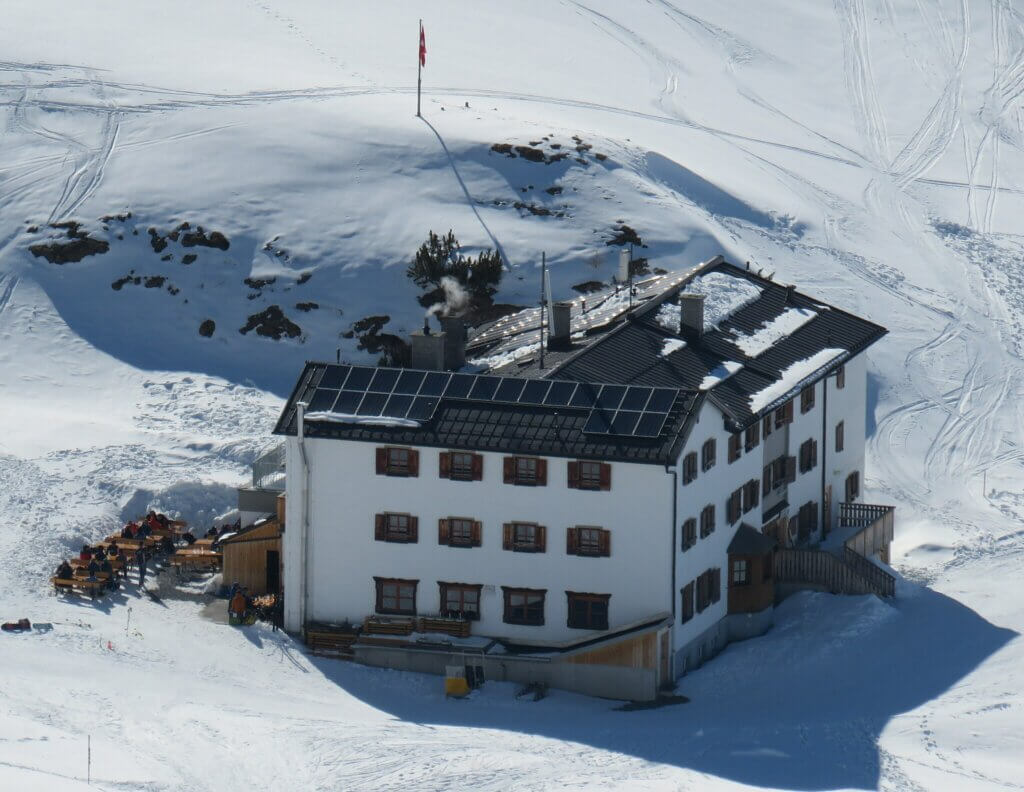
The journey then transitions from the Heidelberger Hut with a passage across one of two passes that peak at around 3000 meters altitude before skiing down to the Jamtal Hut, resting at a comfortable 2165 meters. This hut provides a cosy, relaxed atmosphere and beautiful individual rooms, resonating with a hotel feel while offering a mini indoor climbing wall.
Continuing the tour, the third-day activities feature an ascent of the Dreiländerspitze, a striking 3200-meter peak with a small glacier and northwest flank, making for an exciting ski down to the Wiesbadener Hut.
The fourth day proposes a new challenge for most skiers: the region’s highest mountain, the Piz Buin, stands at an imposing 3312 meters. The approach to this mountain involves glacier traversal and crevasse navigation, requiring a ski depot near the Buinlücke at 3050 meters and then a scramble to the apex, typically accompanied by crampons.
Following the descent from Piz Buin awaits an effortless cruise via the Fuorcla dal Confin, a pass leading to an overnight stay at the Silvretta Hut, standing tall at 2340 meters. The fifth-day standard agenda includes an ascent to the Schneeglocke at 3222 meters, followed by another fulfilling descent to the final hut, the Saarbrückner, at 2538 meters. To mark a satisfactory conclusion to the last day, skiers enjoy a relaxed downhill journey, although not exceedingly steep, all the way down to Galtür.
The Silvretta Traverse keeps its days shorter, and glacier trekking times are relatively limited compared to other Grand Ski Tours. Although the mountains appear quite manageable, and the typical stage is shorter relative to tours in the Swiss Alps, skiers must keep essential glacier, mountaineering skills, and critical decision-making abilities in check largely due to avalanche-prone valleys the same path used to exit during bad weather.
While the tour is of an easier nature, it remains considerable terrain, and our description outlines its notable attributes. Much like other ski tours, there are numerous options and alternative routes based on varying factors such as weather, avalanche risks, and snow depth. Therefore, detailed itineraries aren’t provided. However, it’s strongly recommended that all interested skiers follow a mountain guide for all ski tours in the high Alps to ensure safety and a memorable experience.
Exploring Bishorn: A Stunning Ski Tour in Wallis Region, Switzerland
Straddling 4153 meters, located in the Wallis Region, the Bishorn is one of the Alps’ straightforward 4000-meter peaks. The captivating ski tour opens up with a tranquil setting leading to an uninterrupted 2500-meter descent, all from the crown of one of the Alps’ most visually stunning peaks. Nonetheless, one must undertake a considerable journey to reach this sublime vista regardless of the chosen route.
There are various routes that one can use to reach the Bishorn. Embarking from Turtmanntal, the journey, albeit lengthy, covers the Turtmann Hut or further to the Tracuit Hut for an overnight sojourn. Despite a typically flat 10km+ approach initially, this route is still favoured by many.
An alternative route begins at the lower Val d’Anniviers, starting at St. Luc, where ski lifts or skins are used to navigate to the Bella Tola. A descent ensues towards Turtmanntal via the Pas du Boeuf, bringing travellers to the end of the Turtmanntal. A relatively easy 600-meter skin later brings one to the hut. The Turtmann Hut serves as a primary stopover, or one can choose to continue on to the Tracuit after an estimated 3-4 hours.
From Zinal, a direct route to the Tracuit Hut can be achieved by skinning straight up from the valley. Yet, avoiding the afternoon heat on the west-facing hillside requires an early start. The snow line can equally be challenging to reach during ascension in a lean weather year.
Refreshingly, the Bishorn tour comprises classic ski touring with minimal objective hazards. However, one needs to be mindful of certain crevasse-related concerns on the upper glacier despite being adequately sheltered in general. Given good weather, route finding is relatively comfortable, but it’s worth acknowledging that reduced visibility during glacier travel can quickly escalate to hazardous situations. These conditions necessitate a coherent navigation plan or the aid of a mountain guide in the absence of glacier skills.
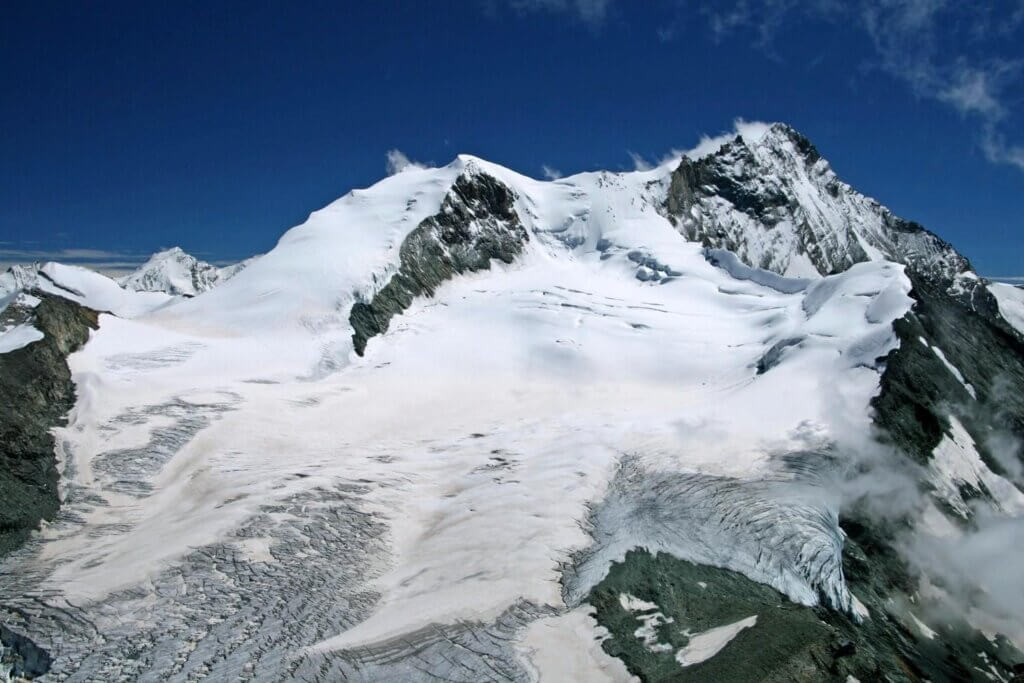
One should familiarize themselves with the lengthy detour from Turtmann Hut to the glacier, as it customarily unfolds in the dark. Following this detour, a lengthy hike culminates at the summit, which could require crampons depending on the prevailing conditions. One should be particularly attentive for imminent crevasses during the upper glacier’s ascent and descent.
Given optimal spring conditions, the descent should yield packed powder until the Tracuit Hut, thereafter transitioning into a corn harvest down the valley. A considerable snow year is required to ensure that skis are not removed before reaching the valley. Once you arrive in the valley, the trail merges with the descent route from the Blanc de Moming and Cabane Arpitetta. From here, it’s a 4km gentle slide into Zinal.
While the descent harbours some of the Alps’ most panoramic landscapes, the vistas sometimes transport feelings of being more in Himalayan territory rather than Swiss. Mountains like the north side of the Zinalrothorn, the Weisshorn’s west face, and the Dent Blanche’s east face dot the horizon, offering hypnotic and unparalleled grandeur.
Finally, upon arrival in Zinal, consider an overnight stay or a culinary experience at Le Besso Hotel. This enchanting hotel, rated among the top favourites in Switzerland, offers home-brewed beer, spectacular food, and a cosy, convivial ambience.
Experiencing the Bernina: A Challenging Ski Touring Itinerary
Embarking on a challenging adventure around Piz Bernina, the easternmost 4000-meter peak of the Alps, opens a unique blend of mountaineering and skiing opportunities. Straddling complex mountainous terrains and glacial landscapes, this exhilarating journey demands impeccable glacier travel, rescue, and navigation skills. Ideal for experienced mountaineers, undertaking this journey during thin snow years can be precarious due to the wending odyssey through extremely crevassed terrains.
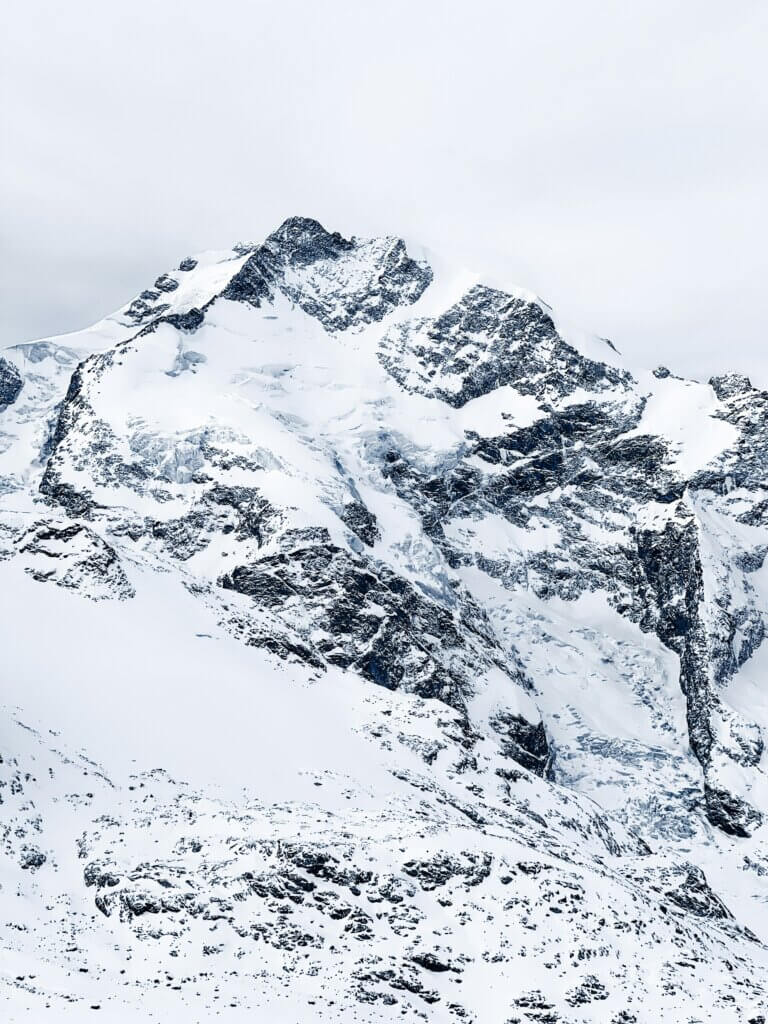
The journey unfolds from the Diavolezza Lift above Pontresina, Switzerland, where Diavolezza’s bustling day scene greets visitors. Its restaurant and terrace provide a vibrant ambience, transitioning into a serene hut at dusk. Marked by the tolling bell of the final tram, the day’s hustle transforms into the serenity of nighttime. This spot boasts views over the sublime Piz Palu and Bernina Massif, the thrills that invite exploration over the subsequent days before crossing into Italy.
Weather conditions do require flexibility in planning. Two options generally present themselves, a strenuous ascent of the 3900-meter Piz Palü or a ski-up Munt Pers at a more leisurely pace. Either endeavour involves a steep descent down the Pers Glacier to the Boval Hut. Though an exposed and potentially icy ridge climb, Piz Palü beckons adventurers with its unassuming nature, typically paired with a ski depot.
The Boval Hut begins the climb to the Bellavista, a terraced summit plateau on the Piz Palü’s western side that stands as the gateway to Italy. It offers access to either the Marco e Rosa Hut or the descent to the Marinelli Hut. If tackling Piz Bernina is on your list, a halt at the Marco e Rosa Hut is obligatory. Hosting a collegial ambience and delightful dining alongside exceptional service, this alpine retreat serves as the prelude to the early morning assault on Piz Bernina.
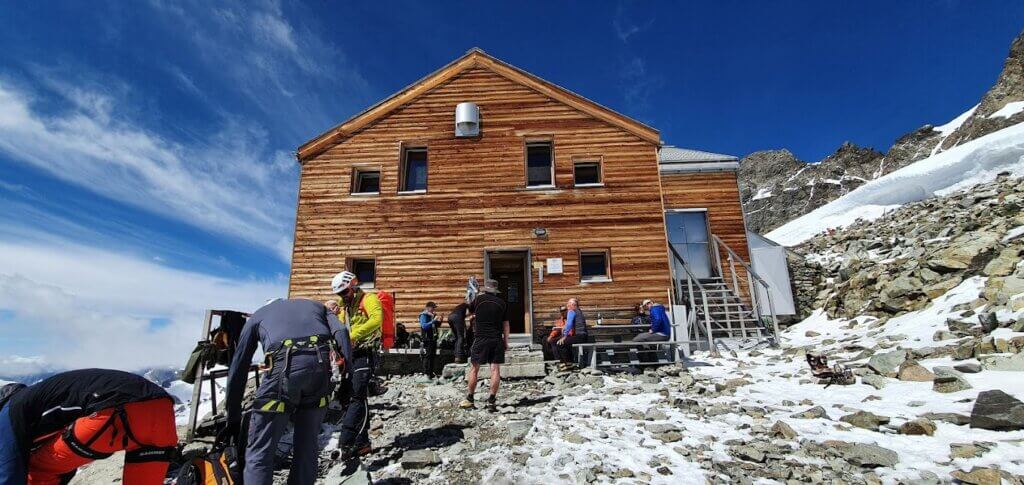
The itinerary then leads to the Marinelli Hut for a delectable Italian meal before deciding between two outbound courses towards Switzerland. To the north of the hut, the Sella Pass is notorious for its heavily crevassed glacier descent to the Coaz Hut. An alternative, necessitated in poor weather or to bypass the Sella Glacier, would be a lengthy glacier climb to the Fuorcla Fex-Scerscen. The trek navigates beneath Piz Sella and Piz Glüschaint’s towering south faces before arriving at a serene ski ride along the Val Fex to Sils Maria, a place legendary for Nietzsche’s extended sojourn.
Bear in mind that this is a rudimentary guide to the myriad possibilities of this mountain ensemble, including countless peaks to conquer, passes to traverse, and huts to discover. Excursions of this calibre require a well-informed guide, knowledgeable in the local terrain, to facilitate an optimal experience. This isn’t a journey for novices or intermediates, but if you’re up to the challenge and have previously ventured through the Haute Route or other classic Alps ski tours, the Bernina tour is a superbly rewarding journey.
Discovering the Hidden Gem: The Berner Haute Route
Nestled in the serene landscape of the Swiss Alps lies an exceptional skiing route known as the Berner Haute Route. Typically engaging and secluded, this route offers a world-class ski tour experience for those seeking unique thrills and adventure. Despite being lesser known than its counterpart, the Berner Ski Tour, the Berner Haute Route is your runway into the heart of a Haute route.
The journey begins at the Steingletscher Hotel on Susten Pass, threading westward through a system of huts and concluding at Rosenlaui, perched above Meiringen. Unlike the famous Berner Ski Tour, which circles around the magnanimous Aletsch Arena, the Berner Haute Route is an exclusive trail through wild and tranquil parts of the Swiss Alps.
Suffused with challenges and appealing flexibility, the Berner Haute Route is far more than a conventional ski tour – it’s authentic skier’s terrain. The path allows participants to stay on course and adapt their journey, offering opportunities for peak-bagging and selection of trails based on the prevailing conditions and personal preferences.
Hidden amidst the vast mountainous and glaciated terrain, the Berner Haute Route is surprisingly user-friendly and is dotted with superb huts, enhancing the overall touring experience. The ideal season for this ski tour is between March and early May, with the difficulty level categorised as high. Hence, it’s an inspirational choice for those up for an adventurous challenge in the splendid Swiss Alps.
Undeniably, even amongst the plethora of ski touring options available in Switzerland, the Berner Haute Route stands as a potential contender for one of the best ski tours around, offering unrivalled scenes and an unforgettable experience. A trip along this route ultimately combines challenging terrain, sublime vistas and excellent facilities into a ski tour worth much more than a few decent tracks in the snow.
The Berner Ski Tour in the Aletsch Arena
One of the most esteemed ski tours in the Alps is located within the expansive territories of the UNESCO Aletsch Arena. This Grand Ski Tour is a noteworthy competitor with the Haute Route and Ortler, primarily due to the unique nature of its abundantly diverse terrain, offering the adventurous opportunity to ski 4000-meter peaks. The versatility of the route, allowing for a more leisurely pace devoid of a rigorous point-to-point itinerary, makes it highly attractive to not just enthusiastic skiers but also alpinists seeking a stimulating escapade.
Access to this splendid Aletsch Arena can be achieved through multiple avenues. As a popular choice, many enthusiasts start their adventure by taking the Jungfraujoch train from the Jungfrau Region on the north side. This allows them to experience fascinating high starts before making them descend to the huts. However, This convenient route comes with a hefty price tag exceeding CHF100. Alternatively, ski lovers may explore other entrances involving extended climbs from Lötschental on the west side or from the southern regions of Bettmeralp or Fiesch.
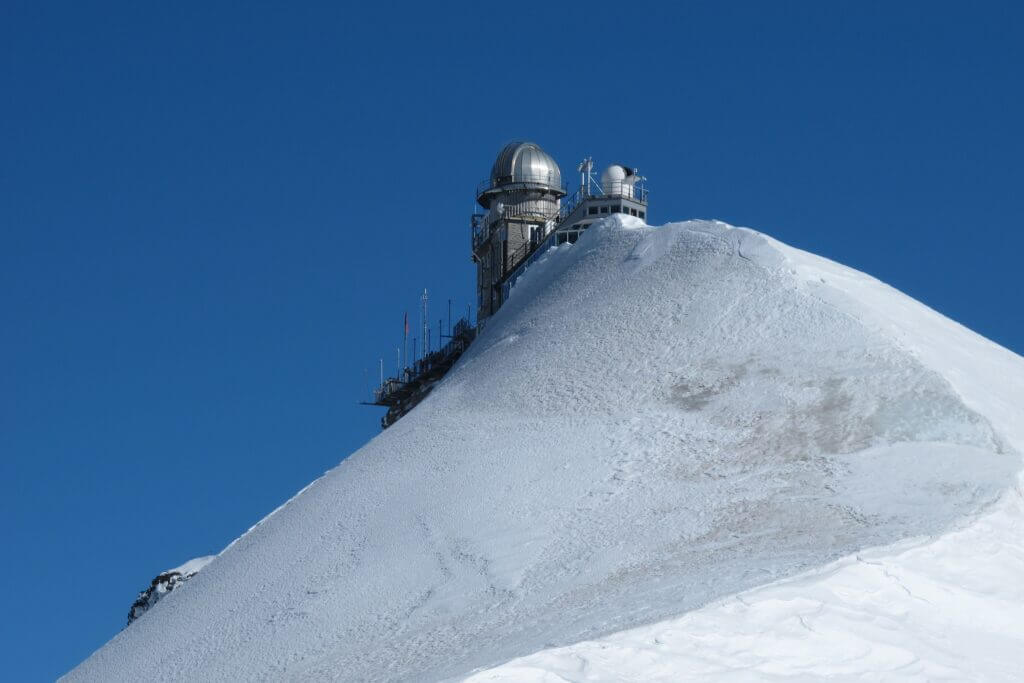
Once inside this winter wonderland are five paramount huts from which to choose: the Konkordia Hut, Hollandia Hut, Finsteraarhorn Hut, Mönchsjoch Hut, and the Oberaarjoch Hut. Each hut serves as a jumping-off point for numerous peak explorations, whether one decides to embark on a day trip from the hut or a journey to the next hut.
The wonders of this region range from the striking Finsteraarhorn—a remarkable 4274 meter mountain right behind the hut bearing its name, the high-reaching Grosses Wannenhorn (3906 meters), to the equally stunning Mittaghorn (3892 meters). However, these are merely a few of the numerous gems this region showcases.
The Grand Ski Tour commences in March, when the huts open, and can extend into June, courtesy of its prevalent glacier landscape. The tour’s season is principally governed by the opening period of the huts, although conditions on the glaciers also play a role. It is essential to remember the inherent risks of skiing on glaciers; the Aletschgletscher, the largest glacier in the Alps, is a prime example. The threat posed by crevasses cannot be understated, making it evident that a high degree of skill and knowledge is required for this thrilling skiing experience in the Aletsch Arena.
Exploring the Famous Haute Route: A Ski Tour from Chamonix to Zermatt
Beginning in Chamonix, France, and culminating in Zermatt, Switzerland, the Haute Route is perhaps the most renowned ski tour in the Alps and across the globe. The journey itself can be strenuous, hence classified under the ‘difficult’ category, but the breathtaking features along the route make the effort worthwhile.
Skiing enthusiasts can undertake this grand tour between late March and mid-May, an optimal time that combines favourable weather conditions and stunning alpine views. The Haute Route carries skiers underneath several of the Alps’ most iconic peaks, culminating in a descent under the North face of the Matterhorn, which can be counted among the finest ski days one can experience.
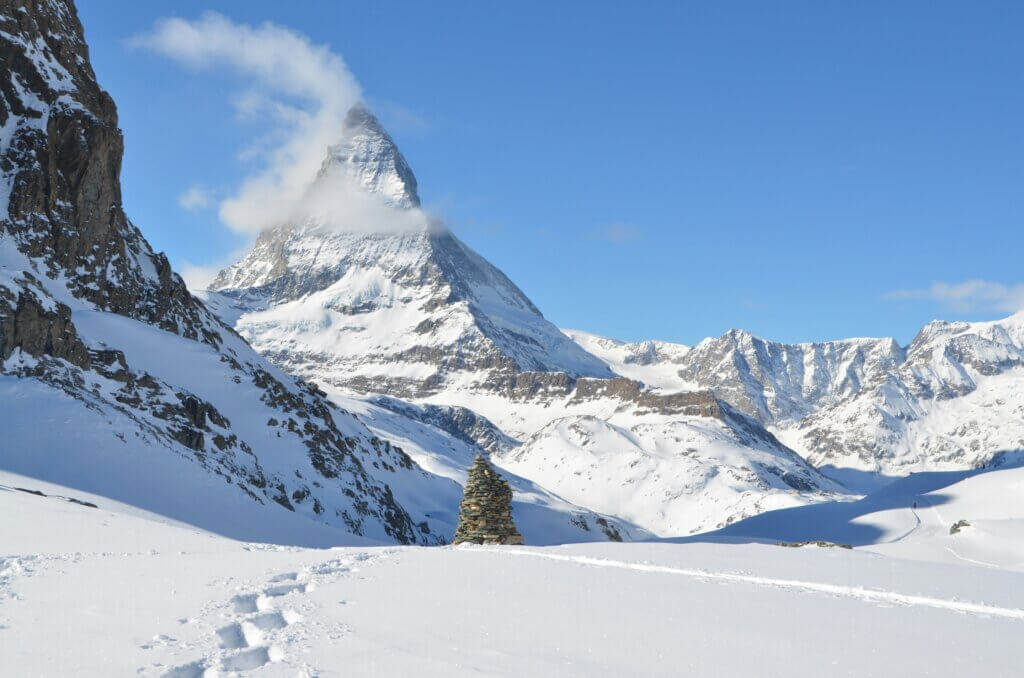
Due to its reputation, this ski tour often attracts travellers attempting their first ski tour. However, given the challenging nature of this venture, it is recommended that novices undertake at least one training day to ensure readiness for the journey. The careful structuring of the trip, including opting for a midweek departure from Chamonix, can also enhance the experience by increasing the chances of securing hut reservations and avoiding crowded trails. Departing on a Tuesday, as suggested by seasoned skiers, tends to create the ideal balance, offering quieter routes and easier accommodation availability.
Experience Big-Mountain Glacier Skiing on the Schwarztor Tour in Zermatt, Switzerland
Embarking from Zermatt, the Schwarztor Tour offers a swift initiation into the world of glacier skiing in Switzerland. This tour promises an exhilarating journey, combining a short ski ascent and traverse with a colossal freeride downhill through a diverse landscape. Though not particularly challenging, the tour passes through heavily crevassed glaciers susceptible to avalanches and, therefore, requires serious consideration due to inherent risk.
The day’s journey starts with a leisurely walk through Zermatt, eventually leading to the Kleine Matterhorn tram that transports you to the impressive altitude of 3883 meters. As soon as you disembark at the station, you are enveloped in a majestic world where glaciers meet the alpine sky. Familiarizing yourself with the route or hiring a guide is crucial because many possible ski paths lead to many locations. A careless decision might result in your descent into the valley, only to find signage in Italian hinting at your unwarranted detour.
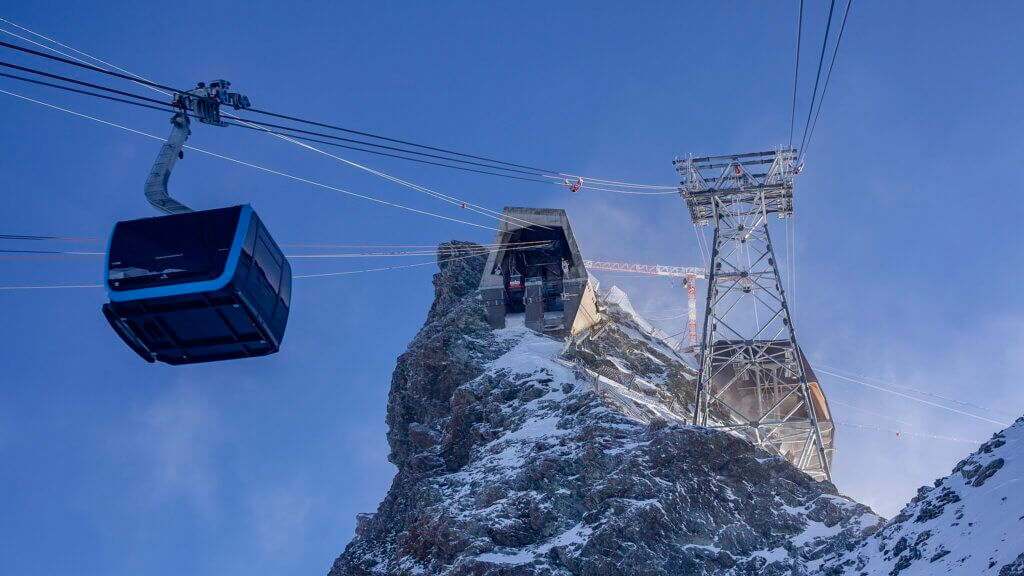
The ultimate aim lies in reaching the Schwarztor, a narrow mountain pass located at 3700 meters on the Swiss-Italian frontier, marking your gateway to the Schwärzegletscher. A gentle traverse and modest climb from the Kleine Matterhorn station will navigate you to this pass. Upon reaching, it’s time to unfasten your skin.
Navigating the descent through the glacier can be exciting, requiring you to weave through crevasses and seracs for long stretches. While skiing isn’t incredibly steep, finding the right line to traverse the glacier is crucial. Once you have managed the glacier trail, the journey continues into the more familiar ski terrain, then gradually entering the narrow Gorner Gorge, marking a scenic end as you return to Zermatt. The Gorge is a classic Alpine exit known for its fast track and technically challenging terrain. Beware, the total descent measures around 2000 meters, offering a varied terrain that is an excellent introduction to Alpine skiing.
Exploring the Ortler: An Unforgettable Ski Tour
Nestled in a remarkable skier’s paradise is the unsurpassed Ortler Ski Tour—one of the monumental ski tours located in the Alps. Excitingly enhanced by superb Italian huts and gastronomy, the journey commences from the parking at the terminal of the road from Santa Caterina Valfurva, positioned above Bormio, and concludes at the same spot. Optimal for experiencing between March and April, this route-specific tour poses varying challenges—primarily medium to difficult.
The Ortler Ski Tour is fittingly considered every skier’s dream tour due to its accommodating terrain, which provides extensive descents and interesting approaches. Compared to other high-altitude Swiss tours such as the Berner Oberland and Haute Route, the Ortler tour terrain is relatively less arduous. While the mountains here present significant glaciers adorned with serac zones and crevasses, along with some intricate high alpine peaks, they generally have a more amicable edge to them with fast exits off the glaciers for moments that mandate retreat. Skiers require fundamental alpine skills to conquer sizeable peaks such as Monte Cevedale, Punta San Matteo, or Gran Zebru, but the terrain feasibly complies. After just one day of skiing from the hospitable huts, the route becomes easy to comprehend.
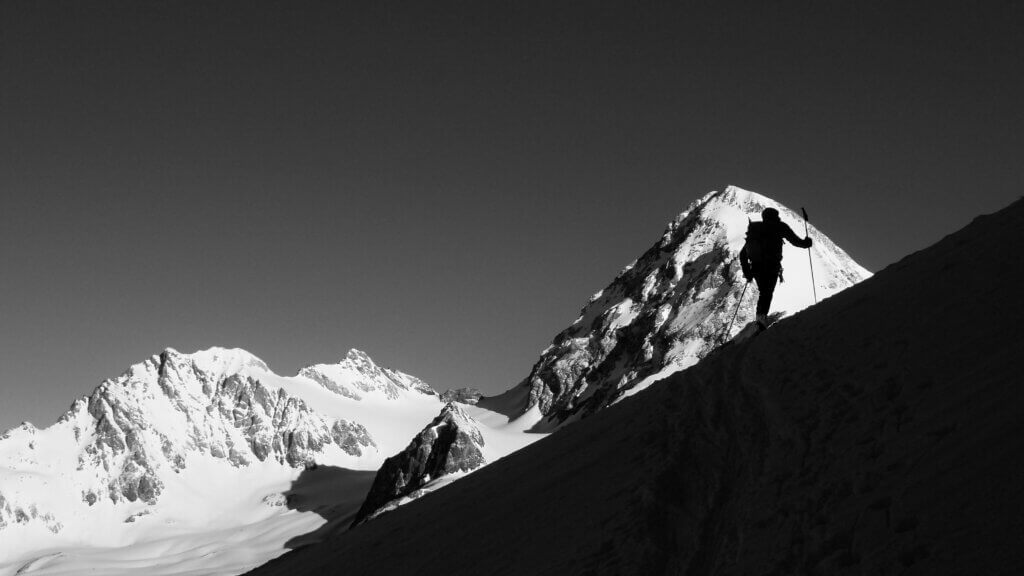
Contrary to the traditional point-to-point style, the Ortler is uniquely made up of a cluster of areas south of the Ortler mountain that do not conventionally constitute the Ortler ski tour group. The area hosts a few strategic huts—the Rifugio Branca, Pizzini, Casati and Marteller. Alpine Ski Mountaineering 1 and 2, old Cicerone Press books, intriguingly include an Ortler Grand Circuit in the latter, which utilizes numerous huts beyond the primary area, adopting a point-to-point tour. However, the usual approach involves sticking to just a couple or a few of the principal huts and skiing peaks from the same location for multiple days.
From around 2006, this tour gained considerable traction, particularly among Americans, due to its amazing ski terrain and distinctive huts offering an unparalleled experience. The huts—particularly the Rifugio Branca and Rifugio Pizzini—are undoubtedly superior to other huts in the Alps, boasting private rooms, espresso machines, bars, and showers, with the notable addition of saunas. The dining experience is also incomparable with four-course meals—highlighted by an antipasto, primo, secondo, and dolce—beating the standard hut cuisine.
Following an indulgent feast, skiers have the luxury of gazing upon the next day’s skiing terrain through the hut windows, effectively bringing the beauty of the Alps within arm’s reach. The Ortler tour is not just a thrilling skiing experience but an affordable slice of the good life—doing so at half the price of other Swiss ski tours.
Spectacular Ski Tour from Realp to Chli Bielenhorn in the Swiss Alps’
Embark on an adventurous journey to the summit of Chli Bielenhorn (2940 m) on an extraordinary ski tour that graces the pristine landscapes of the Swiss Alps. Seated within the canton of Uri in the Urseren Valley, the Chli Bielenhorn can be reached in a day’s challenging tour setting off from Realp. For those seeking a less intense expedition, consider an overnight stay at the Albert-Heim-Hütte, which has the potential to add a serene touch to this exalted adventure.
Starting from the snow-blanketed Furka Pass road, the path separates itself from the mainstream routes, leading toward the less trodden tracks. The initial phase is a blend of a natural traverse through bushes and undergrowth, offering an invigorating, off-beat experience. The course then extends into the open, heading toward the magnificent Tiefengletscher glacier.
A truly stunning spectacle of the Albert Heim hut bunkers right on the route as one ascends. Progressing along the Tiefengletscher, the journey reaches the Untere Bielenlücke, where the “Kamele” – a distinct set of rock towers signifying the apex- can be noticed. The last few meters of this adventure are a thrilling climb over the rocks, culminating in the rewarding canvas of the magnificent panorama greeting one at the climax.
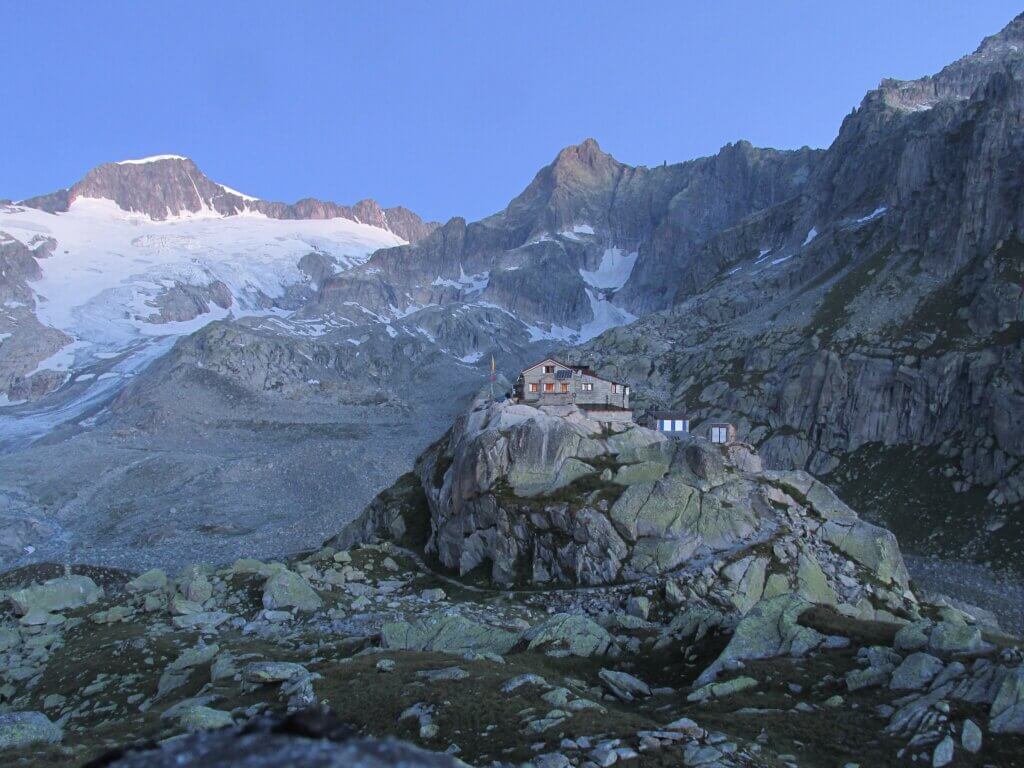
Offering more exhilaration, the descent from Chli Bielenhorn promises an adrenaline-fueled slide down to Hotel Tiefenbach and, progressively, back to Realp. This offers an intrigue of ideal skiing slopes for those seeking a speedy plunge fuelled by a sense of achievement and the majesty of nature’s backdrop. Ultimately, throughout this ski tour, enjoy the breathtaking views over the Urserental and the surrounding peaks, unquestionably a visual delight commanding boundless admiration.
A Sunny Ski Tour to Mattjitsch Horn from Langwies, Arosa
Taking advantage of sunny weather and avalanche-safe territories, one of the top ski tours starts at Langwies at the foot of the alpine forest. The journey to the mountain peak, Mattjitsch Horn, standing tall at 2461 meters, is memorable. The spectacular view participants are exposed to during the course is breathtaking.
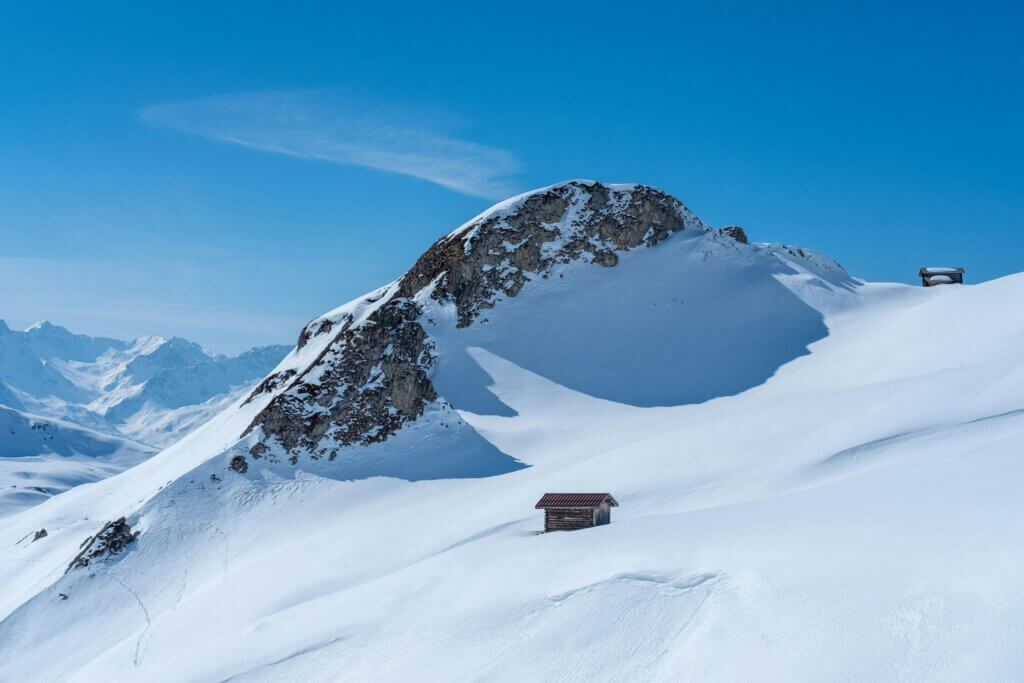
The tour commences on skis or by a quick car ride through the sparse mountain forest. Before long, a car park is reached, marking the last stretch of journey by vehicle. A narrow trail leading up the sunny south-facing slopes will be followed from here. The gradual climb leads to picturesque huts and the dreamlike May lakes, adding an allure to the journey.
The high mountainscape of the Arosa Valley and the Rheinwald peaks become increasingly visible as one travels. This vista can be thoroughly enjoyed throughout the trip and extends beyond the Tödi mountain range. The tour continues across a level-high plateau, heading straight for the summit. The peak of the Mattjitsch Horn is reached without further ado, following a gentle left turn on the path.
The tour offers a fun-filled skiing experience and a feast for the eyes with breathtakingly panoramic views of the Swiss Alps. This south-facing tour of Mattjisch Horn stands as one of Switzerland’s most loved ski tours.
Experience the Ultimate Ski Tour Adventure from Zinal to the Cabane Du Mountet
Ski touring across a trail bounded by staggering 4000-meter peaks is a must-try experience in the Swiss Alps. Specifically, the Zinal circuit presents an unparalleled adventure for enthusiastic cross-country skiers. The season typically ranges from March to early May, with the terrain requiring medium to hard skiing capabilities. Given the vast glacial expanses encountered during the expedition, glacier skills are also essential.
Rather than embarking on a multi-day, point-to-point tour, imagine settling in one comfortable hut for two or three days and becoming familiar with local hut keepers. Embrace the opportunity to lighten your pack each day as you blaze a trail across some of the Alps’ most awe-inspiring landscapes, all while enjoying descents that loop back to your cosy abode. This fascinating experience ends with an astonishing 2000 meters descent directly from a peak above the hut, leading straight back to your point of departure.
At the end of Val d’Anniviers, a valley ringed by 4000-meter peaks, the journey commences from Zinal and proceeds atop the breathtaking Glacier de Zinal. This trek lasts about 5 hours and leads up to the Cabane du Grand Mountet Hut, which serves as the starting point for several classic ski tours.
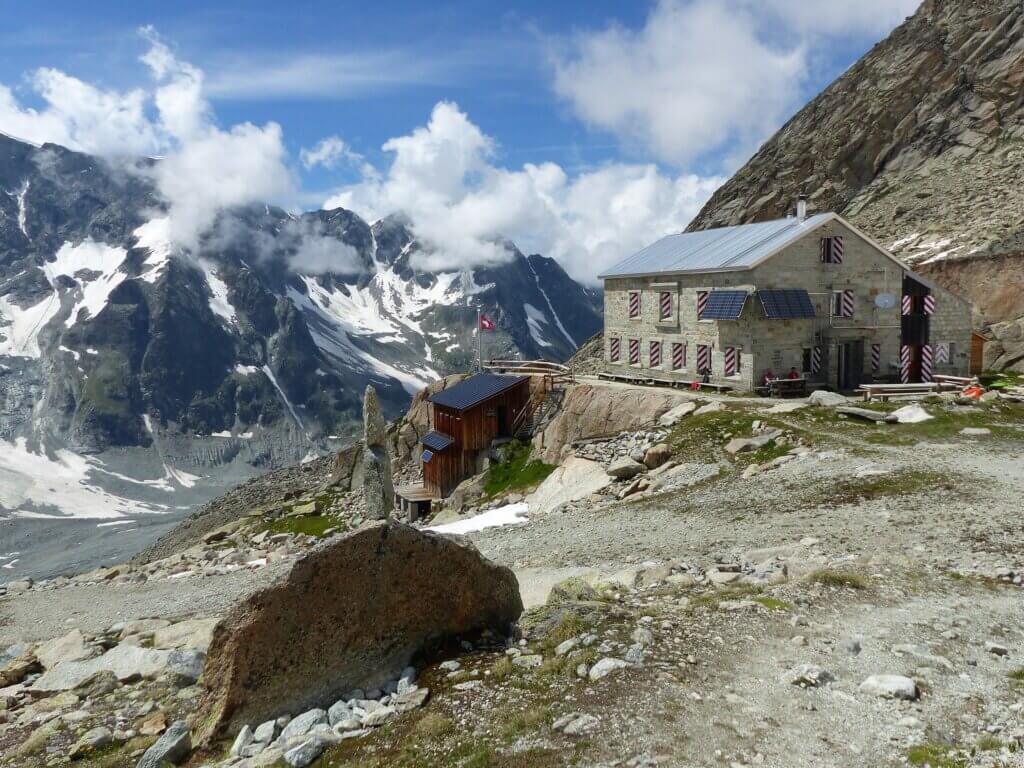
Among these trails is the Trifthorn, a magnificent 3728 meter pyramid with an enticing north-facing ramp trail that becomes increasingly steep towards the summit. Another popular trail is the Point de Zinal, ascending up to 3789 meters, followed by the Col Durand and a mesmerising alpine ridge climb. This thrilling journey can also double as a there-and-back glacier ski tour across an incredible terrain, offering a feast for the eyes. The L’Epaule point, situated 1000 meters northeast of the hut, offers yet another exciting route for a long glacier tour extending to the ridge’s north side and skis back to Zinal.
On the final day, a favourite descent awaits, promising an unparalleled treat in favourable conditions. From the hut, skiers travel north, venturing across the increasingly steep terrain leading up to the base of the Blanc de Moming’s southwest ridge. Upon reaching the rocky ridge, a climb towards the 3651-meter summit of the Blanc De Moming grants skiers a splendid panoramic view. From there, descend eastwards to steer clear of crevasses, returning west below them to find a rock wall. The hut keeper’s seasoned advice points skiers to an enticing natural half-pipe at the base of the wall, which is known to hold excellent snow. As confirmed by many, perfect, untracked powder skiing awaits for more than 1000 meters. Upon re-entering the woodland, a left turn leads back to Zinal, completing an unforgettable skiing experience.
Experience the Thrilling Ski Tour at Chilchalphorn, Switzerland
The Chilchalphorn is renowned as one of Switzerland’s top ski tour destinations. Frequently visited and widely admired by ski aficionados, this popular mountain’s climb begins in Hinterrhein, leading skiers to a magnificent summit over hilly terrain. This ascent is unusually safe from the risk of avalanches, excluding the uphill slope at its peak.
This spectacular peak offers a panoramic view that is nothing short of a dream. The descents are varied, featuring wide, rolling slopes devoid of any tree cover, primarily on the eastern side. Skiers often choose between slicing through light, fluffy, fresh powder or firm, stable firn. Technically, the tour is considered relatively easy from a skiing perspective, with the only challenge being the final few meters of the summit ridge, which are normally covered on foot.
Skiers will also appreciate that despite the location near the Chilchalp glacier, there is no need for specialized glacier equipment apart from the summit slope. A well-planned track system further diminishes the already low avalanche risk. During the spring months, when the snow might still be hard or partially icy, ski crampons prove advantageous. Thus, whether you’re an avid ski tourer seeking the pleasure of cruising down wide, undulating slopes or hunting for an exceptional viewpoint overlooking the Swiss Alps, the Chilchalphorn surely delivers.
Exploring the Majestic Wetterhorn
Standing tall amidst the pristine Swiss Alps, the Wetterhorn is a giant yet often overlooked due to its famous neighbours: the Eiger, Mönch, and Jungfrau. Unlike its contemporaries, revered for their climbing potential, the Wetterhorn shines as a premier ski peak in the Jungfrau region. Offering a delightful mix of ski touring, glacier travel, climbing, and endurance, the Wetterhorn ski tour makes for a classic big-mountain adventure, particularly from March to early May.
The trail can be tackled in one of three distinct ways: as a side trip from Gauli Hut during its open season, as a trip from Rosenlaui with overnighting in the Rosenlaui winter bivouac shelter, or as a challenging one-day ascent from Rosenlaui, demanding around 2500 meters of climbing. Despite a short, steep segment near the Rosenlaui Bivouac, the ski touring is fairly relaxed, given you are equipped with ski crampons.
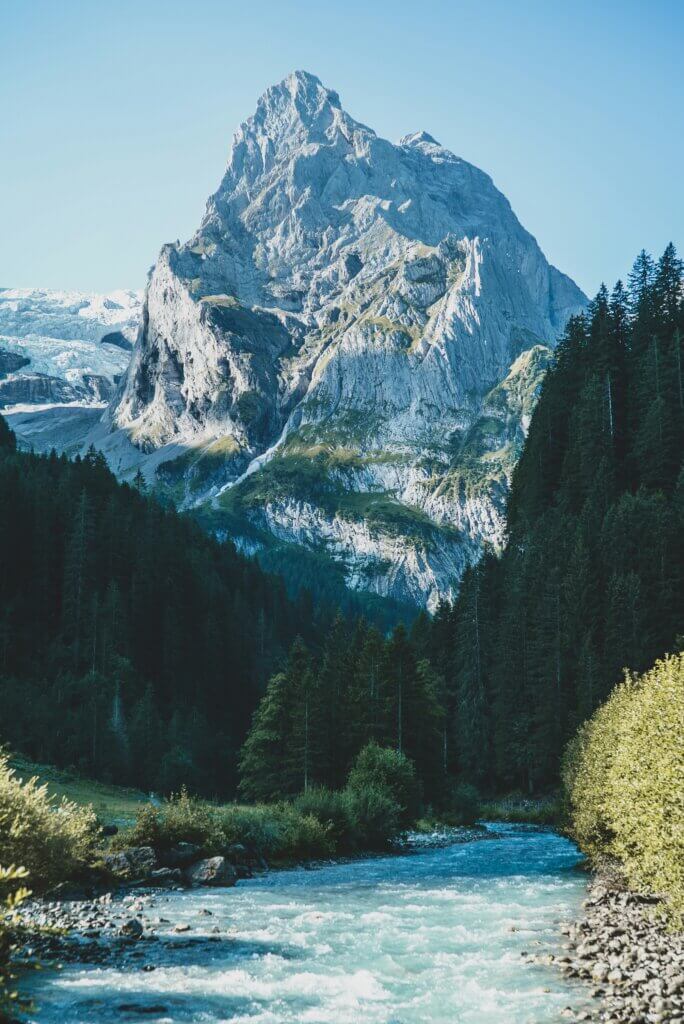
The journey involves crossing and climbing the Rosenlaui Glacier in a westerly direction. While it might seem daunting from Rosenlaui due to a massive serac zone, there lies a broad corridor through the crevasses and seracs at approximately 2500 meters, which is suitable for both ascent and descent.
As you approach the Wetterhorn, the landscape, although a bit monotonous, rewards travellers with breathtaking views of the Eiger, Schreckhorn, and Finsteraarhorn. Upon reaching the saddle just south of Wetterhorn’s summit, boot crampons replace skis for the final 250 meters, with a potential for slabby rock depending on the conditions. This route’s culmination offers panoramic views from the 3692-meter summit overlooking Grindelwald and the vast expanse of the Alps, making the rigorous morning effort worthwhile.
The descent follows a similar route, with some variations depending on conditions. In most experiences, the Rosenlaui Glacier maintains good snow quality, providing fair compensation for the uphill exertion. As the day winds down, skiers face a decision at the point just below the Rosenlaui Bivouac: follow the ascent’s line or divert west to the base of Klein Wellhorn, depending upon the season and snow cover.
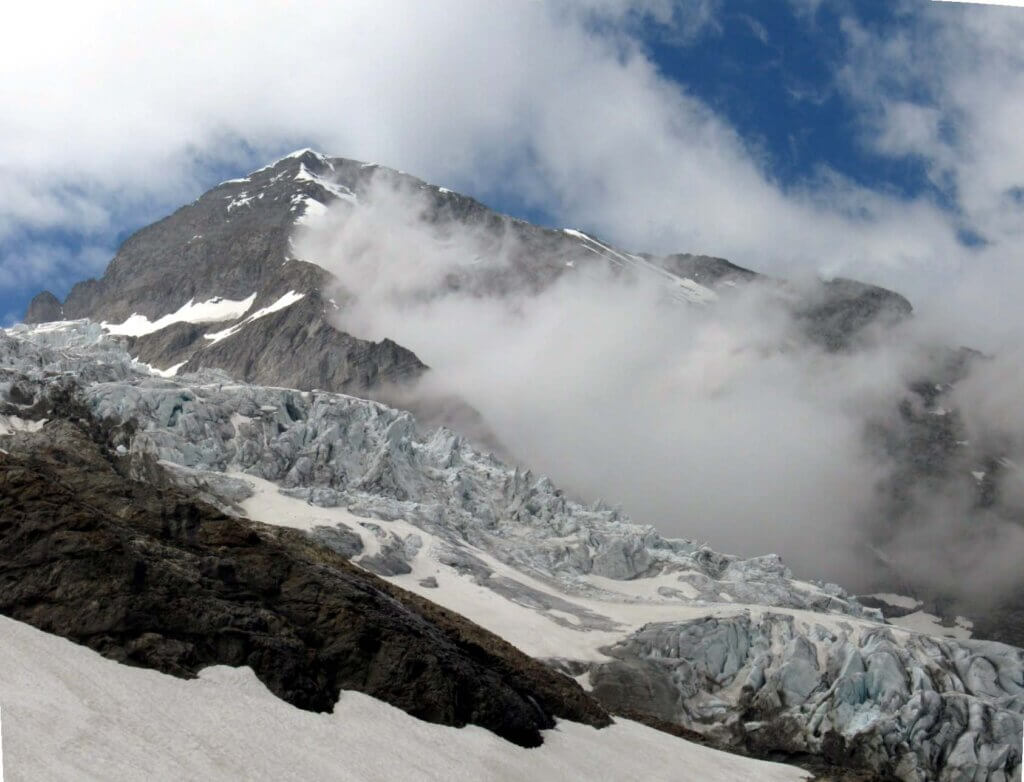
The Wetterhorn not only presents an unforgettable ski adventure but also adds a hefty 2400 meters of skiing to the itinerary. For those seeking a slight variation or an extended challenge, an ambitious circuit colloquially called the “Horny Tour” can be opted for. This encompasses additional climbs to the Mittelhorn and the Rosenhorn, totalling a formidable 3600 meters, multiplying the thrill without a single turn. All these factors make Wetterhorn an irresistible ski tour, especially for those who cherish the ascent as much as the descent.
Experiencing the Stockhorn 3532m Ski Tour from the Monterosa Hut
Switzerland’s monumental Stockhorn elevation, standing at 700 metres, embodies an ideally balanced ski tour of intermediate difficulty. Typically, this route is undertaken as an endearing farewell to the Monterosa hut, descending a thrilling 2200 metres with the added challenge of an intermediate ascent via Blauherd.
Winter ascents to the renowned Monte Rosa hut can be accomplished through varying routes, each offering its own unique blend of challenge and intrigue. The Zermatt route begins at Furi, progressing through Gorner Gorge and the tongues of Gorner and Grenzgletscher Glaciers, culminating in a 1300-metre ascent to the hut.
Alternatively, thrill-seekers may opt for a breathtaking cable car ride to Klein Matterhorn, followed by a descent through the dramatic Schwarztor and over the Schwärzegletscher to the Grenzgletscher. The journey over the glacier then unfolds into a 1400-metre descent, punctuated by a gruelling 300-metre steep uphill climb leading to the hut.
The Gornergrat railway ascent to Rotenboden offers yet another way to embark on this wintry adventure. Following the initial incline, skiers traverse a moraine and glide over the Gorner and Grenz glaciers, finally reaching the Monte Rosa hut.
Finally, a hybrid cable car and chairlift route leads to the Stockhorn. From there, a descent to the Stockhorn Pass begins, moving over the upper Gorner Glacier and navigating the moraine via ferrata, concluding in a satisfying arrival at the hut. Thus, these diverse routes and ascents provide a rich and varied menu of top ski tours in the alpine wonderland of Switzerland.
Ski Traverse from Piz Jeramias to Wiesbadener Hütte via Chamonna Tuoi CAS
The Swiss Alpine Club’s rustic Chamonna Tuoi CAS hut, nestled in Lower Engadine, marks the beginning of the panoramic cross-country ski tour leading to the Wiesbadener Hütte, through Fuorcla Vermunt, standing at 2798 metres. One can further enhance their adventure by climbing Piz Jeramias, a mountain that stands tall at 3087 metres.
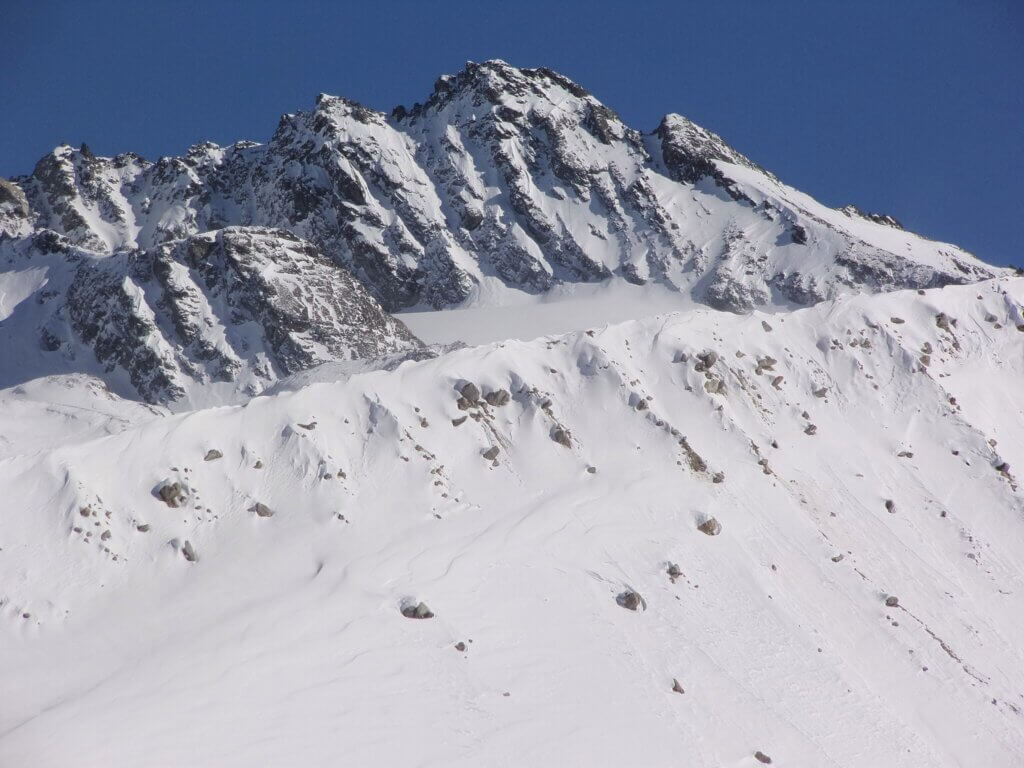
Embarking from the homely ambience of the Tuoi hut, the route starts with a steep ascent of the southern slopes of S-chardunas, navigated through a series of hairpin bends. The tour gifts a consistent view of the precipitous W face of Piz Buin on the left. Above the glacial lake, the terrain soothes into a flat surface, presenting an inviting spot for a sunny pause.
The path leading to the Wiesbadener Hütte is left shortly after, veering right towards the base of Piz Jeramias’ intimidatingly steep summit flank. Progressing easily, skiers encounter the exposed W ridge trailing from the summit, creating a picturesque panoramic skyline. A ski depot is set up here, and a climb on foot yields a rewarding summit experience with an unparalleled panorama; Piz Buin, Vorarlberg’s highest peak, dominates to the west, while the gentle Vermunt Glacier, guiding towards the Wiesbadener Hütte, unravels northwards.
Descending from the summit is a thrilling experience, weaving through the glacier basin before embarking on the next route segment. Civilised hairpin bends guide visitors towards Fuorcla Vermunt’s terrain that diverges towards its end. A former customs station available here provides shelter in adverse weather conditions.
From this point onwards, the journey continues across the even spans of the Vemunt Glacier’s slopes until the Wiesbadener Hut is easily reached, drawing an end to this breathtaking Swiss adventure.
Strenuous Yet Scenic Ski Tour on Signalhorn
Springing from its less-frequented status compared to the neighbouring peaks, Switzerland’s Signalhorn is a delightful indulgence for mountain enthusiasts. Its easy climbing spots, exposed summit ridge, and exhilarating descent over the Verstanclator back to Monbiel make it a captivating journey. The route’s undulating geography transports you across a breathtaking alpine landscape, enhancing the lure of skiing in this region.
Engaging yet strenuous, the alpine ski route on Signalhorn takes you on a thrilling ride. The trek proceeds over an ascent of 1000m, rolling down to a nearly 2000m descent, spanning an impressive 22.5 km – a veritable challenge even to the seasoned adventurer.
The descent is particularly demanding, taking a route over the Verstanclator straight down to Monbiel. It requires skilled pushing and ends up on the cross-country ski trail to Monbiel. The descent from the Verstanclator to the valley floor near Alp Sardasca is characterized as a skier’s dream run, infusing the experience with charm.
Although the ski ascent to Signalhorn’s summit is unfeasible, the beginning of the southwest ridge can be used as a helpful ski depot. From this point, adventurers can climb to the peak using crampons and an ice axe, navigating easily traversable climbing areas and partly exposed terrains.
The panoramic vistas from the summit, the rousing downhill run, and the proposed alternate descent via the hut access through Galtürtälli all render this round tour a perfect escapade. The Signalhorn experience grants an incredible variety and an unforgettable skiing destination in Switzerland by offering a balance of high-octane action and serene natural beauty.
Thrilling Ski Mountaineering Across Monte Rosso, Cima di Val Bona, and Monte del Forno in the Swiss-French Bergell Alps
The Bergell Alps in Switzerland presents an exhilarating experience for avid mountaineers with their steep descents and exposed summit ridges. Nestled amidst the pristine beauty of the Swiss Alps, this ski tour offers a unique opportunity to scale three peaks in a single day, spanning a total distance of nearly 17 kilometres and an ascent of 1,700 meters. Aptly designed for fit ski mountaineers, this route is most enjoyable in favourable weather conditions.
A noteworthy feature of this tour is the dynamic course, which swerves multiple times across the Swiss-French border. Along this path, the breathtaking views of the Bergell Mountains become a true spectacle of nature to behold. From the imposing magnificence of Piz Badile and Piz Cengalo in the west to the equally enchanting sights of Cima di Castello, the three Torrone peaks, Monte Sissone, and the northern faces of Cima di Rosso and Cima di Vazzeda, the panorama is rich in variety. The distinctive Monte Disgrazia in the southeast represents the ultimate summit.

Attempting to ascend to the three peaks of Monte Rosso, Cima di Val Bona, and Monte del Forno requires a certain mountaineering skill. Enthusiasts are expected to establish a ski depot just beneath the summit and then take on the last leg up to the top using crampons and ice axes through partially exposed ridges. This tour typically includes applying and removing ski skins on three different occasions. Although one can choose to bypass a summit, the experience of conquering all three offers an unparalleled sense of accomplishment.
Whether it’s the unmatched views, the challenging terrain, or the thrill of crossing the mountain borders, this ski tour excursion in the Bergell Alps of Switzerland embodies the essence of a premier mountaineering adventure.

